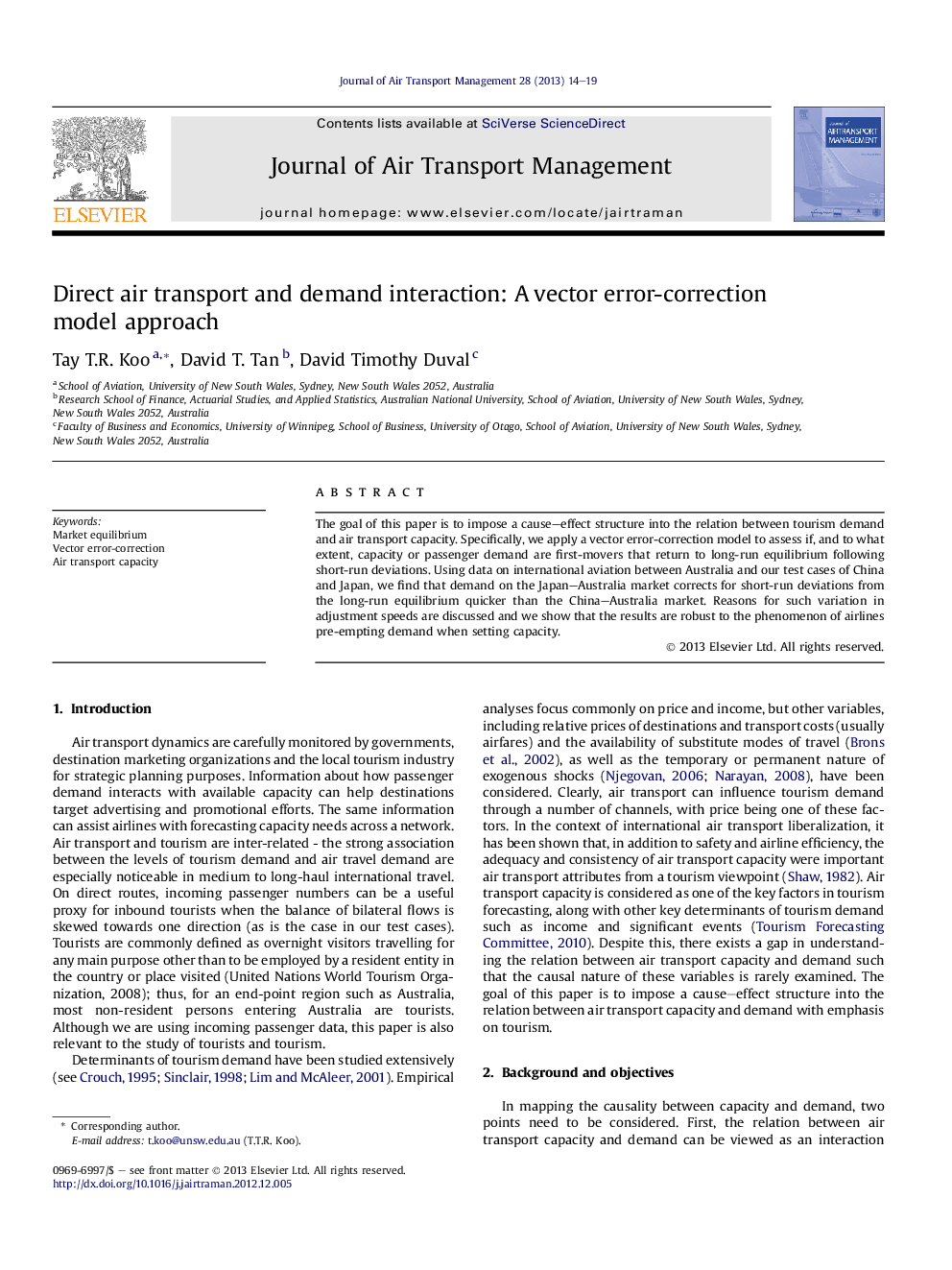| Article ID | Journal | Published Year | Pages | File Type |
|---|---|---|---|---|
| 1030958 | Journal of Air Transport Management | 2013 | 6 Pages |
The goal of this paper is to impose a cause–effect structure into the relation between tourism demand and air transport capacity. Specifically, we apply a vector error-correction model to assess if, and to what extent, capacity or passenger demand are first-movers that return to long-run equilibrium following short-run deviations. Using data on international aviation between Australia and our test cases of China and Japan, we find that demand on the Japan–Australia market corrects for short-run deviations from the long-run equilibrium quicker than the China–Australia market. Reasons for such variation in adjustment speeds are discussed and we show that the results are robust to the phenomenon of airlines pre-empting demand when setting capacity.
► Vector error-correction models can formalize the aviation capacity–demand relation. ► Our model helps determine how the capacity–demand equilibrium is restored in the short-run. ► The speed of adjustment to equilibrium depends on tourism market characteristics. ► We show some evidence of greater passenger responsiveness in mature markets.
